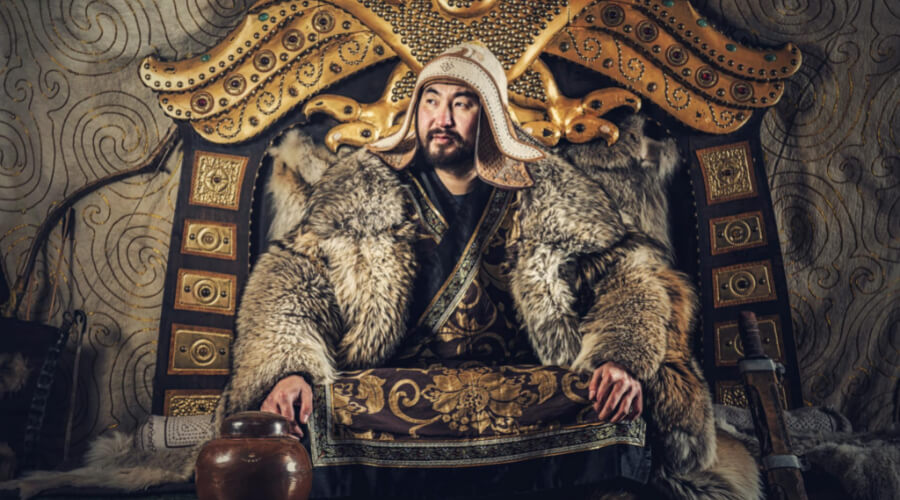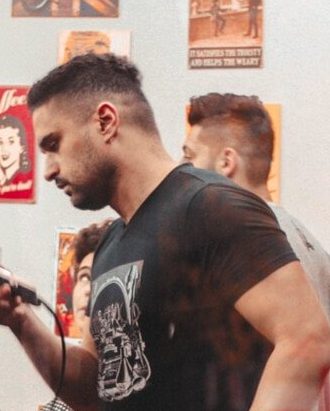Mongols traditionally wore their hair long, with men and women alike sporting flowing locks. This practice was rooted in their nomadic lifestyle, protecting against harsh weather. Hair length could reach up to 3 feet (about 91 cm) in some cases.
How Mongols Wore Their Hair
The signature hairstyle of the Mongol horde, one of the most powerful empires in history, has long captured the imagination of historians and folks around the globe. This listicle will delve into the specific ways the Mongols styled their hair.
1. The Warrior Cut
This was perhaps the most prevalent hairstyle among the Mongol warriors. Most Mongol men often shaved their heads entirely, save for a single long braid or queue at the back, which is often called a ‘warrior’s cut.’ The hair at the front was kept short or bald to prevent the enemy from grabbing it in combat.
2. Hair Knots
Hair knots or ‘Boqta’ was an emblem of the Mongol nobility, primarily women. Traditionally the boqta was a headdress, but the hairstyle came to embody the term. It involved coiling the hair in various ways and then securing it on top of the head. This style was frequently embellished with ornaments and jewels, indicating the wearer’s status.
3. Three Tufts Style
Mongol children, particularly boys, were often given a specific hairstyle called ‘Three Tufts’ or ‘Gutal’. This involved shaving most of the head, leaving only three sections of hair. These sections or tufts were believed to protect the child from evil spirits.
4. Loose Hair
Amongst the Mongol women, the most common hairstyle was to let the hair loose, sometimes with a central parting. Married women, especially, wore their hair this way, often complementing it with a variety of headgear.
5. Braided Hairstyles
The Mongols also made extensive use of braids in their hairstyles. They varied in complexity and design, ranging from single large braids to numerous smaller ones. Braids were a common choice for both men and women.
These hairstyles tell us a lot about the Mongols’ society and their beliefs. To them, hairstyles were not just a vain obsession but acted as markers of age, status, and marital status, and even served superstitious purposes.
The Great Mongol Empire

When discussing Mongolia, you have probably heard about Genghis Khan, who unified the Mongol tribes and built the world’s greatest empire. Mongolia is home to around 20 distinct tribes. With several tribes like the Khalkha, Naimans, Buryats, and Oirats.
Each tribe had a unique haircut. During the Manchurian conquest and the formation of the Qing dynasty, they imposed rules that compelled the Chinese to wear Manchurian hairstyles. That explains why some Chinese have haircuts similar to their Mongolian counterparts.
This demonstrated Han subordination to the Manchurians. To be clear, ‘Manchuria’ most commonly refers to the region of Inner Mongolia and Northeast China, not elsewhere. The haircut entailed shaving the front of the head while maintaining a lengthy braid in the rear.
Forcing the Han Chinese to cut their hair was a particularly heinous demand because it defied Confucian custom. And when some Han Chinese communities rejected the order, they were slaughtered as a result.
Emperors’ Army
In ancient Mongolia, cutting your hair was a sign of disobedience. Therefore, it was mostly used for identification. The combat is a complicated affair, and unlike in current times, they did not wear uniforms.
Their hair was separated into two pigtails, which were then divided into three braids each. The ends of their braids would then be wrapped up and tied behind their ears on the top of the braid.
The Khiyat Mongol soldiers unusually wore their hair. They emulated wild creatures because they played an essential part in Altaic legend. Their haircut was designed to accommodate their heads in helmets and headgear. The number of braids and shaving styles differed from clan to clan.
The Turks shaved their heads and only had hair on their forehead. Men shaved the tops and sides of their heads, leaving only a short lock-in the forehead and a lengthy lock of hair behind. Similarly, the Kazakhs wore a single braid on top of their hair.
However, in Asia’s grasslands, you had to wear a hat all the time to protect yourself from the cold and cutting winds; therefore, this aided their way of life.
Shamans didn’t give a damn about their hair; therefore, it was long and untidy. The hair of a shaman was wild and untamed, but that of a monk was clean-shaven.
Other tribes’ men and warriors wore their hair in braids and frequently shaved the forehead or front of the skull. It was sometimes merely a matter of style since Göktürks wore their hair long and unbraided
Modern Army
The Mongolian army’s hairstyle has evolved as a result of modernization. However, in 1991, their uniforms from the reign of Genghis Khan and the Mongol Empire were reintroduced into the armed services. They cut their hair in the manner of normal civilization, yet they wear antique empire-era headgear.
Cow Horns Hairstyle
The Mongols believed that haircuts should resemble the wings of an eagle or a garuda bird. The primary feature of a woman’s hairstyle was to imitate the wings of an eagle or the horns of a cow. Other groups might claim they looked like rams or yaks.
The Khalkha’s married ladies wore their hair to resemble animals. Their emblem of independence and nomadic existence was a cow. In their society, the eagle was a mythological bird. The iconic headpiece was exclusively worn by married ladies of excellent social standing.
The hats were decorated with rank or title emblems and good luck motifs on the tails of the footslog. This hairstyle’s construction was quite intricate. Women had their hair neatly pushed back from their faces.
They affixed decorative felt threads on hairbands. It was built around a tiny silver lace cap to which various silver, coral, and embellishments were connected. The combed hair was then separated into two halves, and bamboo pins were used to construct the wings or horns. Finally, richer Khalkha brides adorned their hair with rows of embroidered brocade coverings.
On rare occasions, they would wear a crown-shaped cap. The hat was composed of velvet with colorful ribbons tied around the back. The arches may be covered with black horsehair to resemble the woman’s hair in rare circumstances.
While these arches are thought to be the only women’s hairstyle, they are by no means the only hairstyles available. They would wear elaborate headdresses consisting of a band and a cap among the Ordos tribes. The front and rear of the headgear were sewed with numerous beads, silver plates, and cushions.
Daah Urgeeh Ceremonies
This was a hair-cutting event for children celebrated by Mongol tribes. Boys were subjected to the ritual when they reached the age of three or five, while females were subjected to it when they reached the age of two or four. Before this event, it was customary not to trim the child’s hair at all.
The practices were practiced in ancient times and are being practiced by the Mongols to date. For the youngsters, this was a proud and unforgettable moment. It signaled the end of babyhood and the beginning of childhood. Another critical component was that the event followed the lunar calendar. Boys’ hair was cut on an even year, while girls’ hair was cut on an odd year. Besides, the Mongol tradition believed in odd numbers as arga (method) and even numbers as bilig (wisdom).
Traditional Buddhist lamas and monks were responsible for advising the community on which years to perform the event.
If the fortunate date fell between the ages of 5 and 6, it signified that the child’s hair would grow long and never be trimmed again.
There was just one haircut available for transitioning youngsters, and that was a bald head. So they would wear pigtails when they were considerably older and their hair had grown. Pigtails are a helpful technique to keep hair out of the child’s face.
The Mongols’ past is prized and enjoyed by a magnificent culture. They wear and spend their money extravagantly in the nomadic lifestyle. At this stage, the tribes were mostly responsible for the various hairstyles.

